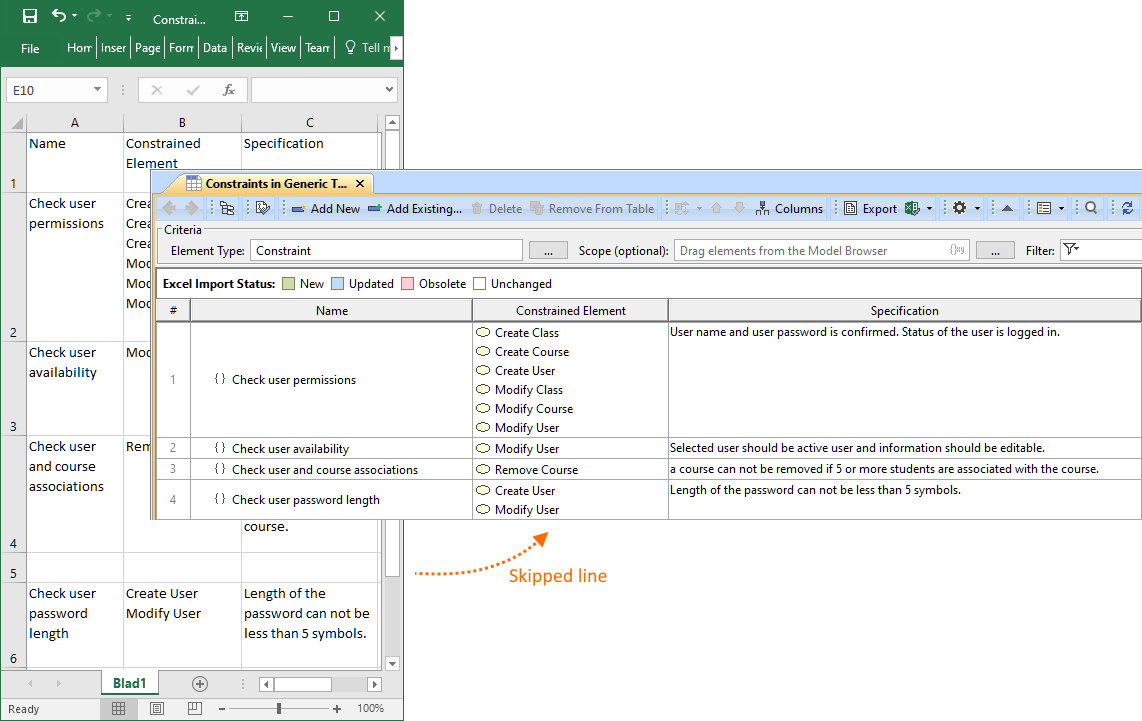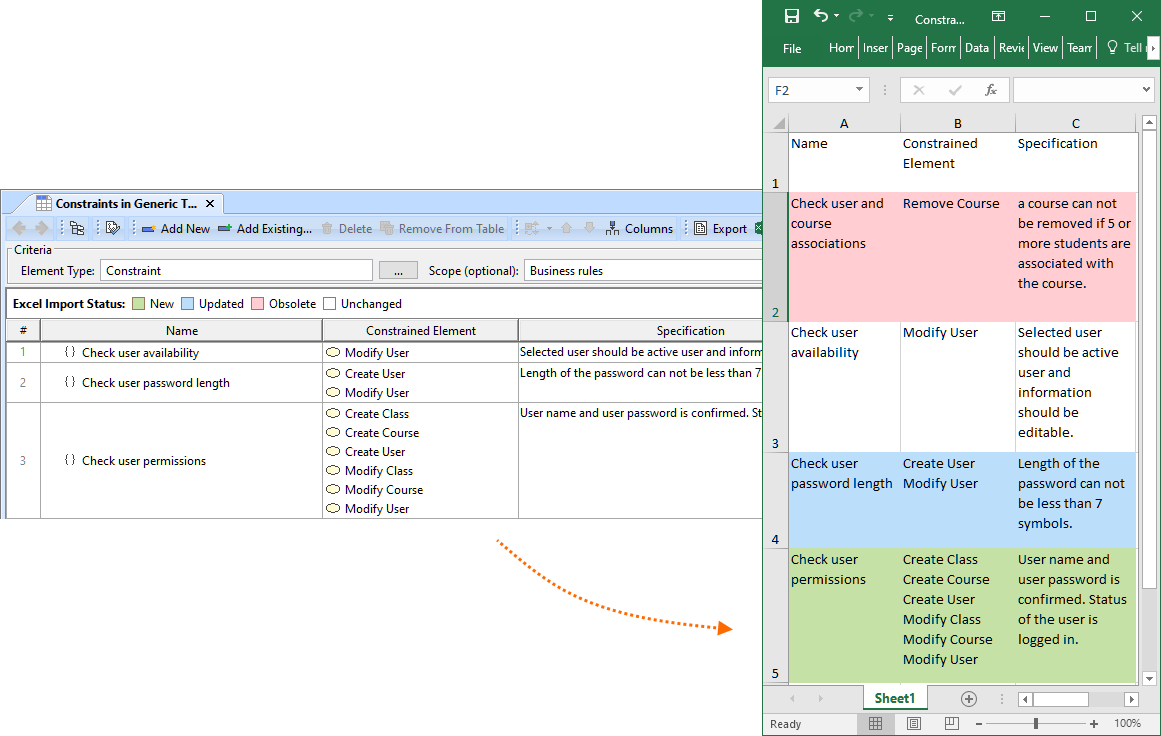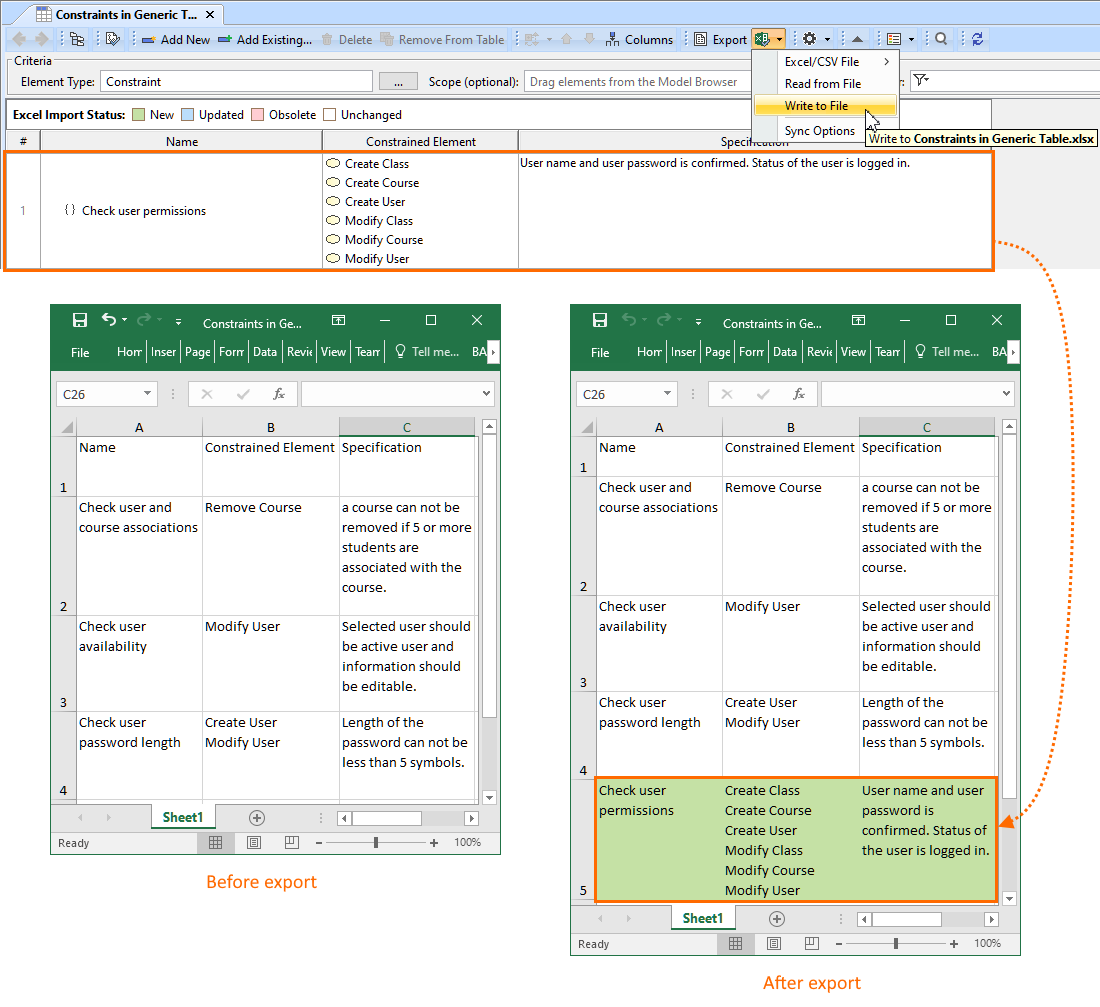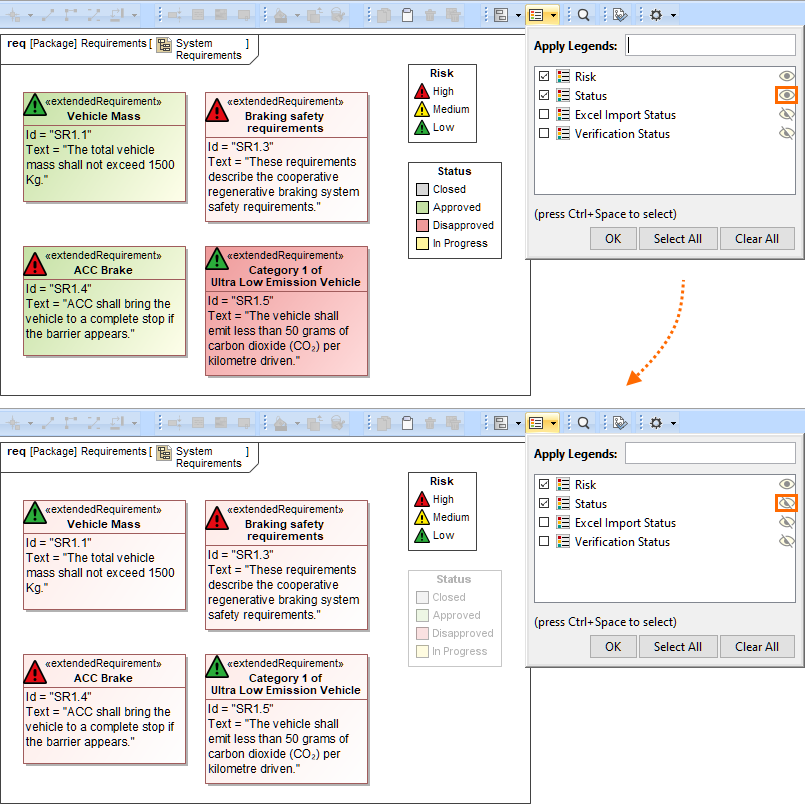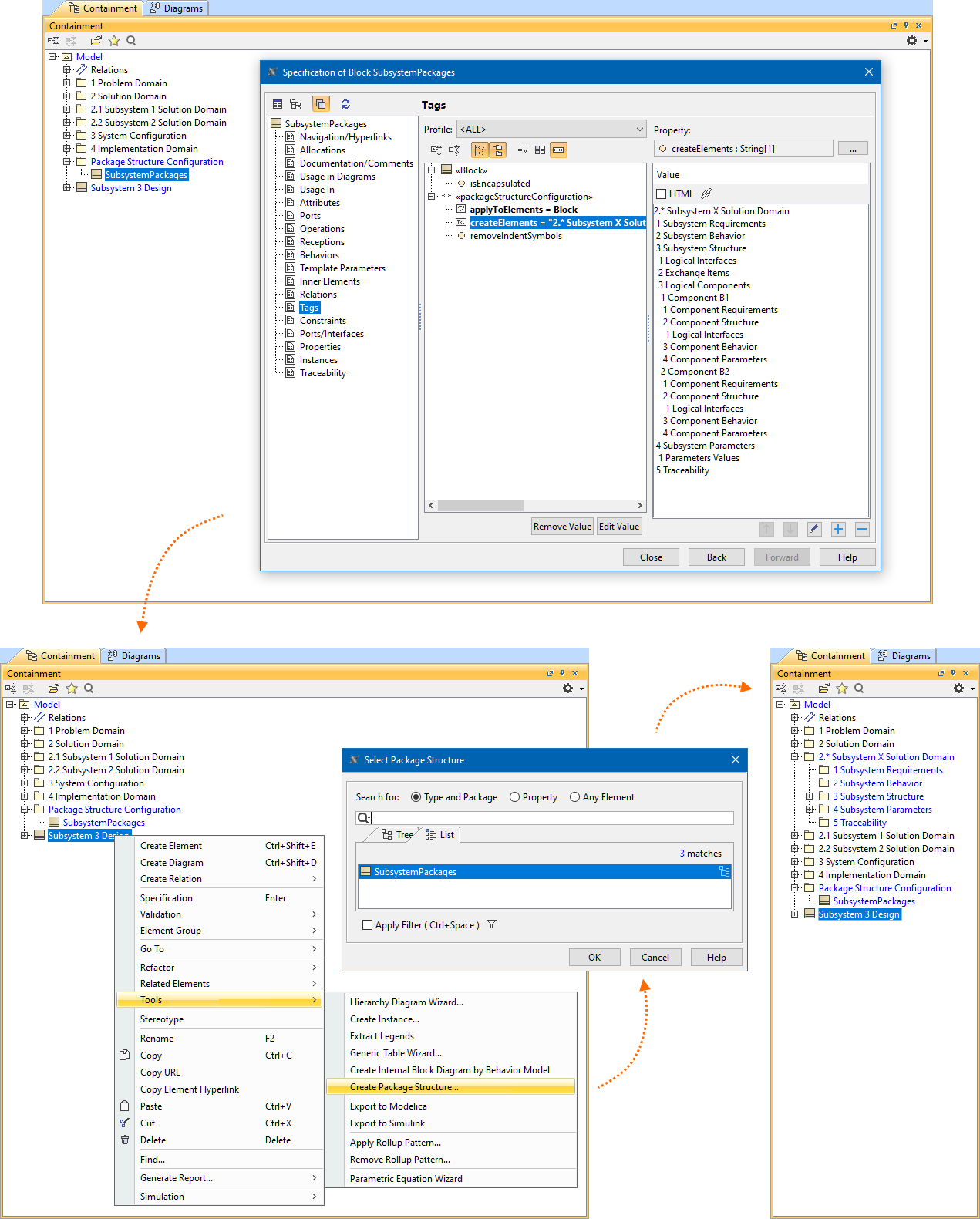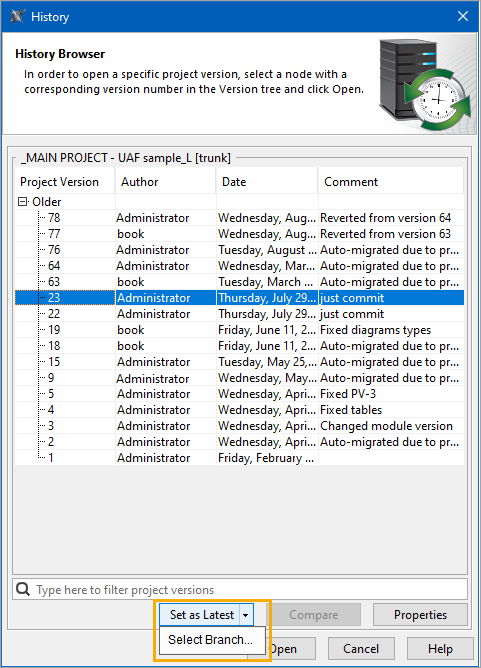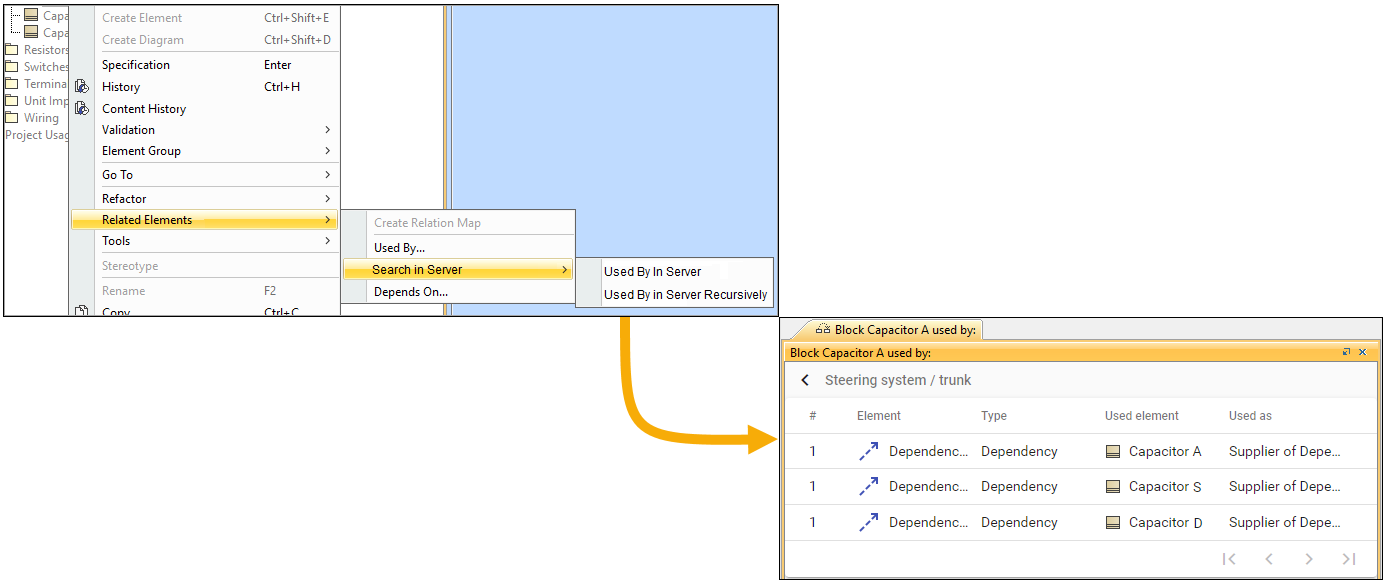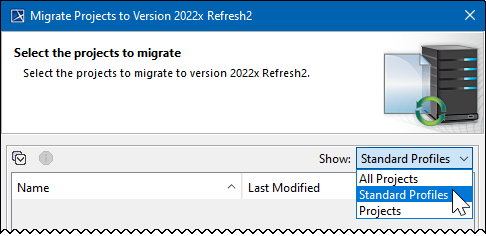Released on: July 7, 2023
The 2022x release introduces performance improvements to both the client-side and Teamwork Cloud-side as well as general modeling and collaborative modeling enhancements.
The client-side performance improvements include improved validation performance and decreased table opening time.
The Teamwork Cloud server-side performance improvements include password lifecycle management, cross-cluster synchronization, and webhooks improvements.
For general modeling, this release presents new syncing with Excel options, an ability to manipulate legends without the diagram lock, and automated package structure creation.
Additionally, collaborative modeling is improved with a new file exchange format, the ability to view Teamwork Cloud data markings in MagicDraw, a pre-merge check of project permissions, and other enhancements. Also, Power'By has been updated with standard profiles migration and used projects' reference cutting capabilities.
To download the latest version of the modeling tool, see Downloading installation files. For further information, check the product documentation.
Client-side Performance Improvements
- Validation Performance Improvements. Running the validation on the entire model or a selected part is 2-5 times faster, depending on the model, than in 2022x Refresh1.
A chart comparing the time it takes to execute the Validate Elements Recursively action on an entire project in 2022x Refresh1 and 2022x Refresh2.
- Table Performance Improvements. Opening a table is now significantly faster than in 2022x Refresh1. Tables with a large number of rows and columns (especially custom columns) will have a noticeably decreased opening time.
A chart comparing the opening time of a table in a SysML project in 2022x Refresh1 and 2022x Refresh2. Now it is 5 times faster.
Teamwork Cloud-related Performance Improvements
Password Lifecycle Management
Password complexity management in Teamwork Cloud Admin’s Settings application was enhanced with added password lifecycle management options. In the Lifecycle tab, you can specify internal users’ password complexity and lifecycle requirements. Each time the rules are changed, all internal users must change their password, even if the current password complies with complexity & lifecycle requirements.
Password complexity & lifecycle requirements with the new Lifecycle tab.
Cross-Cluster Synchronization Improvements
Starting with 2022x Refresh2, we allow further synchronization of previously synchronized resources. This change was inspired by certain business cases where third parties willing to interchange Teamwork Cloud projects often deny connections to each other’s networks (as represented by the first topology in the image). With the improvement, it is possible to set up a Teamwork Cloud instance in a somewhat neutral environment (such as AWS Cloud), where all involved parties can synchronize the resources they want to share. To check out a resource, it is simply necessary to synchronize it further from a neutral environment to a company’s specific network.
Webhooks' Improvements
In 2022x Refresh2 we implemented the ability to manage webhooks in Teamwork Cloud Admin conveniently. You can select webhook scope (resource or model element) and event (commit or tagged commit).
Setting a webhook in Teamwork Cloud Admin.
Modeling and Infrastructure
New Syncing with Excel File Options
Syncing with Excel is now improved with additional options:
- Skipping empty rows and/or columns upon import. If your Excel file contains any purposefully created empty rows or columns, you can now skip them instead of stopping the import at the empty row or column, allowing you more control over the data import.
All data in the Excel file, including that which follows the empty row No. 5, is imported to the modeling tool.
- Color marking modified data upon export. You can now color-mark exported table data based on its changes. This allows you to easily review data changes and make necessary adjustments in the Excel file based on this information.
Exported table data is color-marked based on its changes. Red indicates removed, blue - updated, and green - added data.
- Mapping elements by ID upon export. From now on, you can map elements by ID upon export, adding new data to the Excel file. This allows you to export table data to a synced file without overwriting previously existing content in the file.
Check user permissions row is added to the synced Excel file Constraints in Generic Table without overwriting the data already existing in the file.
- Syncing data in Plain Text or HTML upon import/export. You now have the option to import/export data in HTML (default) or Plain Text via the Sync Plain Text and Import Plain Text check box options, allowing you to choose the data format for the import/export.
The Sync Plain Text check box in the Excel/CSV Sync Options dialog and the Import Plain Text check box in the Excel/CSV Import dialog.
Learn more about Syncing with Excel files >>
Manipulate Legends without Diagram Lock
From now on, you can temporarily suspend or activate a Legend via the Suspended/Active toggle button. It allows you to preview a diagram or table with or without adornments of a Legend without making permanent changes.
Temporarily suspending the applied Legend Status via Suspend/Active toggle button.
Learn more about Manipulating Legends without Diagram Lock >>
Automated Package Structure Creation
You can now easily create additional package structures you may require in your model. While previously, this could have been achieved by copy-pasting an existing package structure, now you can do that efficiently by defining your package structure configurations and then creating those structures via the Create Package Structure action.
The package structure configuration element SubsystemPackages defines the subsystems package structure for a Block element.
This subsystems package structure is created for the Block element Subsystem 3 Design via the Create Package Structure action.
Learn more about Automated Package Structure Creation >>
Collaboration
Teamwork Cloud
New File Exchange Format for Server Projects (Technology Preview)
Until now, our contractors used .mdzip files for swapping projects; however, this format is not ideal as it has issues with slow performance and project structural changes. We wanted to solve both problems to ensure faster project export and import while retaining the same project structure. Therefore, we present a technology preview of a new file exchange format .szip which can be used for project export with or without used projects, adding a project as a new server project, and updating a project from a local project.
Teamwork Cloud Data Markings in MagicDraw
Teamwork Cloud data markings are now shown in Open Server Project / Manage Project and Use Server Project dialogs in MagicDraw. Additionally, a check is performed to ensure that users are not trying to open or use a project with a higher access level than they are assigned, in which case a notification is displayed.
Enhanced Set as Latest Functionality
The Set as Latest functionality was updated and now allows us to set a specific version as the latest in another branch. Therefore, it is now possible to quickly set a particular version of the branch to be the latest in the trunk without time-consuming merging processes.
New Select Branch... option of the Set as Latest functionality.
Pre-merge Check of Project Permissions
We introduced the ability to check permissions before merging to avoid project merge delays due to the slow delivery of error messages about insufficient permissions. The Check Permissions button is now available in the Merge Projects dialog, allowing to see if the merge will be possible.
Merge Projects dialog with the new Check permissions button.
Recursive Global Element Usage Search
Previously, it was only possible to search for element usages individually, which is not an optimal solution in many cases. With 2022x Refresh2, we are introducing the Used By in Server Recursively option for the Search in Server action. Used By in Server Recursively works similarly to Used by in Server, except it searches for usages of the selected element and all its children elements.
Used By in Server Recursively action.
Other fixes/improvements
Relations (including connectors) are now represented in more detail in the conflicting changes tree of the Conflicting Changes panel.
- Remove, keep References operation has been improved to work faster.
Power’By
Standard Profiles Migration
To successfully migrate from 2022x Refresh1 to 2022x Refresh2, Power’By users need to upgrade their standard profiles. We are helping them to do this by providing a dedicated filter that allows users to select standard profiles and migrate them in bulk.
Selecting Standard Profiles in project migration dialog.
Cutting References If a Used Project Is Not Found
If you try to open a main project and its used project or projects are not found, you can choose to remove the used project or projects and cut all references. This way, you can still work on the main project.
Upcoming Updates
Important updates coming with the next major version release:
- OpenJDK version change. Desktop applications (MagicDraw, Cameo Systems Modeler, Cameo Enterprise Architecture, Magic Software Architect, Magic Cyber Systems Engineer, Magic Systems of Systems Architect) and Teamwork Cloud will only run using OpenJDK 17.0.7+7 version.
- JavaScript Nashorn scripting removal. The JavaScript Nashorn language usage is deprecated with the intention of removing it from the next major version. Please use JavaScript Rhino instead. Learn more about the deprecated JavaScript Nashorn >>
- Record Macro functionality discontinuation. The Record Macro functionality will be discontinued in the next major version release.
Version news of servers and plugins
MagicDraw Documentation
News of earlier versions






